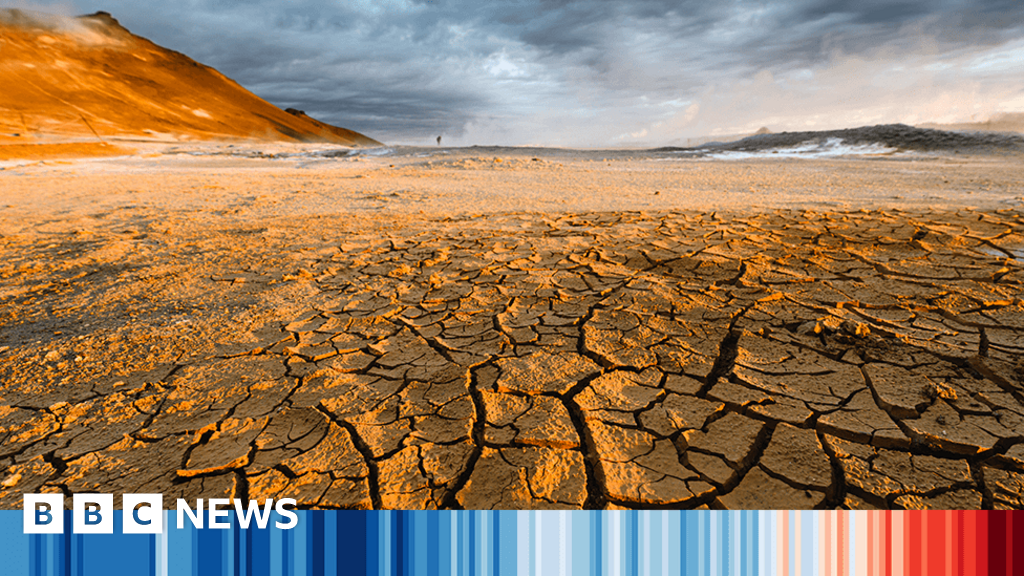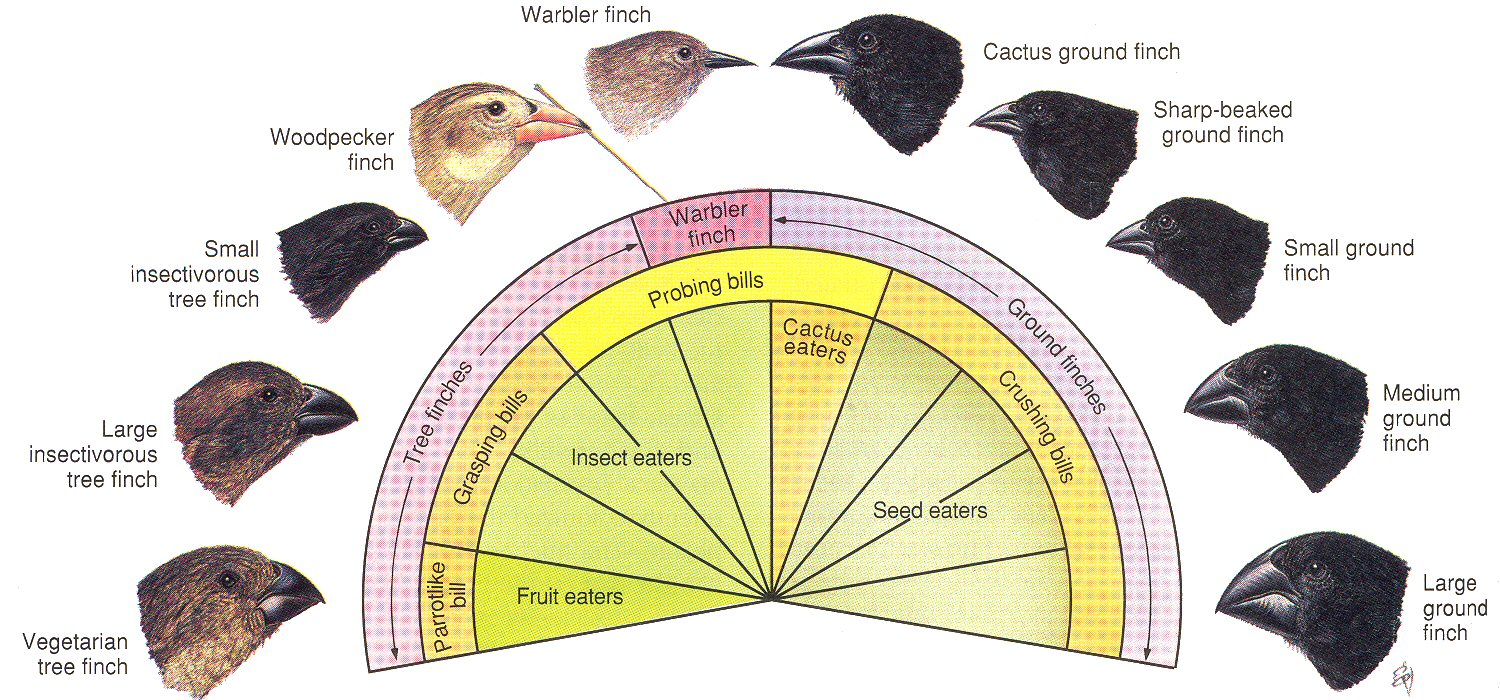Climate change is more than just a headline; it’s a profound shift affecting the ecosystems we cherish, such as Harvard Forest. Here, researchers delve into the intricate relationships between warming temperatures and forest ecology, observing remarkable alterations in tree species and their habitats. Over recent decades, the vibrant tapestry of this 4,000-acre Massachusetts forest has evolved, revealing new challenges and opportunities for diverse flora and fauna. As scientists measure climatic changes meticulously, the urgent need for environmental research becomes evident, highlighting how even subtle shifts can have cascading effects on our natural world. In exploring the impacts of climate change, their work sheds light on the resilience of ecosystems and the responsibility we bear to understand and adapt to these transformations.
The phenomenon of climate change encompasses a range of significant environmental shifts that challenge the stability of our forests and ecosystems. This ongoing climate crisis, often referred to as global warming, triggers alterations in seasonal patterns, leading to unexpected changes in tree demographics and plant health. Research centers, like Harvard Forest, play a pivotal role in tracking these ecological transitions, as they offer invaluable data that helps us comprehend the long-term effects of our changing climate. Understanding how these dynamics affect forest ecology is essential for future conservation efforts, as researchers strive to anticipate changes that may threaten biodiversity and ecosystem integrity. Through continuous studies, scientists are gaining insights into this urgent matter, emphasizing the need for informed action in the face of environmental challenges.
The Impact of Climate Change on Harvard Forest
Harvard Forest serves as a living laboratory for researchers investigating the tangible effects of climate change on forest ecology. The long-term data collected here, including temperature and precipitation records going back to the 1960s, allows scientists to discern the profound changes occurring in the ecosystem. As global temperatures rise, Harvard Forest is experiencing shifts such as the increased prevalence of invasive species like the woolly adelgid, which has a direct impact on the hemlock population. These shifts are not only observed through statistical data but also manifested in the personal experiences of the researchers like David Orwig, who have witnessed the gradual transformation of the landscape over decades.
The observations noted by scientists at Harvard Forest point to a broader narrative of climate change that echoes across forests worldwide. The decline of hemlocks, traditionally dominant species in these habitats, signifies a larger disruption in ecological balance. With the impending replacement of evergreen trees by deciduous species such as black birch, researchers are acutely aware of the ongoing shifts in biodiversity. Through ongoing environmental research, these changes highlight the importance of long-term studies in understanding how specific tree species are affected by climate trends.
Resilience of Forest Ecosystems Amidst Change
Despite the challenges posed by climate change, scientists at Harvard Forest emphasize the resilience of forest ecosystems. Even though the hemlocks may be dwindling, their replacement by adaptable tree species indicates the forest’s ability to evolve. The black birches entering the forest represent not just a change in tree species but also a shift in the overall ecosystem dynamics, including variations in soil chemistry and nutrient cycling. This resilience serves as a reminder that while specific species may suffer or decline, ecosystems are capable of reorganizing and finding new balances.
This intrinsic resilience is also reflected in ongoing research projects at Harvard Forest, where scientists experiment with interventions aimed at mitigating the effects of changing climatic conditions. By actively monitoring and studying the interactions between various forest components, researchers aim to understand not only the immediate impacts but also how these ecosystems could adapt over time. The future of forest ecology relies on this understanding, as scientists hope that the persistent study and engagement with natural changes will lead to innovative strategies for conservation and management.
Harvard Forest: A Hub for Climate Research
Harvard Forest has become a crucial hub for climate research, attracting scientists from various backgrounds to study its unique ecosystem. With over 100 active research projects at any given time, the forest serves as a center where issues of climate change are tackled comprehensively. By utilizing extensive historical data and collaborating with experts in forest ecology, researchers can analyze the long-term impacts of climate factors on tree species change, providing invaluable insights into future forest conditions. This collaborative approach not only enhances the depth of research but also amplifies community awareness of environmental issues.
The wealth of data collected at Harvard Forest is instrumental in shaping broader discussions on climate change policy and action. Researchers like Emery Boose highlight that sharing their findings with the public is essential for cultivating a deeper understanding of climate dynamics. By disseminating knowledge through outreach programs, they aim to educate society about the significance of forest ecosystems and their role in combating climate change. This engagement fosters a sense of stewardship among visitors and local communities, making them more active participants in supporting environmental research and conservation efforts.
Personal Narratives and Shifting Baselines
At Harvard Forest, personal narratives play a significant role in conveying the impact of climate change on the environment. For researchers like David Orwig and Clarisse Hart, the shifts they observe are deeply personal. They recall vibrant winters filled with snow that are now becoming increasingly rare, creating a poignant connection to the landscape they study. These individual experiences contribute to the shared narrative of a community grappling with the reality of climate change. It also brings to light the concept of ‘shifting baselines,’ where successive generations adapt to new norms, potentially losing touch with what once was.
The notion of shifting baselines introduced by Missy Holbrook encapsulates the challenges facing both scientific inquiry and public perception regarding climate change. As newer generations grow up with altered environmental conditions, their understanding of what constitutes a ‘normal’ ecosystem may differ significantly from that of their predecessors. This gap highlights the critical need for education and awareness in climate change discussions, ensuring that future generations have a frame of reference for valuing natural ecosystems. By recognizing these shifts, researchers at Harvard Forest aim to bridge the knowledge gap and inspire collective action toward environmental stewardship.
The Role of Invasive Species in Forest Dynamics
Invasive species pose a significant threat to the ecological balance within Harvard Forest, acting as one of the major agents of change in response to climate variability. The woolly adelgid, for instance, has wreaked havoc on the hemlock population, demonstrating how invasive pests can alter forest dynamics. Researchers actively monitor these invasive species to understand their mechanisms and impacts, contributing valuable insights to forest ecology. The presence of such species can lead to a cascade of effects, including changes in soil chemistry and the opening up of the canopy, thus altering the habitat for native flora and fauna.
The adaptive strategies employed by scientists at Harvard Forest to combat the effects of invasive species are critical to maintaining ecosystem integrity. Ongoing studies aim to identify potential natural predators or resistant hemlocks that could mitigate the threat posed by the woolly adelgid. These research efforts are crucial not only for preserving the current biodiversity but also for informing management practices across other regions facing similar challenges. By understanding the dynamics of invasion, researchers can offer effective solutions that promote resilience amid the pressures of climate change.
Community Engagement and the Value of Harvard Forest
Community engagement is a key aspect of the work being done at Harvard Forest, where the connection between local citizens and environmental research is emphasized. Researchers like Clarisse Hart actively involve the community in awareness programs designed to educate about the impacts of climate change and the importance of forest ecosystems. This relationship allows the community to take part not just as observers, but as active participants in nurturing and protecting the landscape they love. The collective effort fosters a strong sense of stewardship and responsibility for the forest, highlighting the importance of collaborative approaches to climate issues.
As the forest continues to undergo changes driven by climate factors, building community resilience becomes ever more critical. By encouraging local involvement in scientific projects and outreach activities, researchers at Harvard Forest are working to ensure that the bond between the forest and its surrounding communities remains strong. The goal is to craft a narrative of collective action, fostering a culture that values ecological health and sustainability. This engagement underscores the role of Harvard Forest as more than just a research facility; it is a vital part of the fabric connecting people to nature.
Future Directions in Forest Research
Looking forward, the research conducted at Harvard Forest is poised to evolve, addressing the pressing challenges posed by climate change. With life sciences increasingly intersecting with technology, innovative methodologies, and tools are being integrated into forest ecology research. From remote sensing techniques to evolving data analytics, researchers are better equipped to monitor ecological changes and predict future forest conditions. The use of advanced technologies in tandem with traditional ecological knowledge enhances the overall understanding of climate impacts, paving the way for informed conservation strategies.
Moreover, as climate change continues to accelerate, the need for adaptive management practices and resilience-building in forest ecosystems becomes increasingly urgent. Researchers are focusing on developing strategies that not only promote biodiversity but also enhance the capacity of forests like Harvard Forest to withstand changing environmental conditions. Collaborative efforts with policy-makers, land managers, and ecological communities are essential in shaping a resilient future for forest ecology, emphasizing that adaptation and sustainability must go hand in hand.
The Importance of Long-Term Ecological Monitoring
Long-term ecological monitoring is fundamental to understanding the ongoing effects of climate change at Harvard Forest. This approach allows scientists to track changes over time and identify patterns that inform conservation efforts. With records spanning decades, researchers can analyze the effects of climate variability on tree growth, species composition, and overall ecosystem health. This continuous collection of data provides clarity on how forest dynamics shift in response to environmental stresses, enabling effective management strategies to be developed.
Additionally, long-term monitoring enhances the reliability of future climate models by grounding them in empirical data that reflects real-life changes in forest health and species interactions. By prioritizing consistent observation and study, researchers at Harvard Forest underscore the necessity of establishing a robust understanding of shifting ecological baselines. This knowledge is invaluable not only for academic inquiry but also for informing public discourse on climate change and ensuring that conservation efforts remain relevant and impactful.
Understanding Tree Species Change in Response to Climate
The phenomenon of tree species change in response to climate variables is a central theme in the research at Harvard Forest. As temperatures rise and precipitation patterns shift, the survival and growth of certain tree species are profoundly impacted, leading to noticeable changes in forest composition. By analyzing historical data and monitoring tree populations, researchers are able to track how species such as black birch are replacing hemlocks as the forest adapts to new environmental conditions. Understanding these shifts is critical for maintaining biodiversity and ecosystem functionality in light of rapidly changing climates.
Through focused research on tree species change, scientists aim to answer vital questions about species resilience and adaptive mechanisms. This research involves analyzing not just the displacement of existing species but also the introduction of new ones potentially better suited to future conditions. The findings will help inform conservation policies, ensuring that proactive measures can be implemented to protect vulnerable species and promote a diverse and resilient forest ecosystem amid ongoing climate change.
Frequently Asked Questions
How is climate change impacting forest ecology at Harvard Forest?
At Harvard Forest, climate change is causing significant shifts in forest ecology, such as the decline of hemlock trees and the increase of black birch populations. These changes affect the forest’s overall biodiversity, temperature regulation, and soil chemistry, illustrating the direct impact of a warming climate on these ecosystems.
What evidence is there of tree species change at Harvard Forest due to climate change?
Research at Harvard Forest provides evidence of tree species change, with black birch increasingly replacing dying hemlocks. The data collected over decades shows a trend towards warmer and wetter conditions that favor different tree species, altering the forest’s dynamics and species composition.
What role does Harvard Forest play in climate studies and environmental research?
Harvard Forest serves as a vital location for climate studies and environmental research. It hosts about 100 active research projects that examine the effects of climate change on ecosystems, such as soil heating experiments and gas exchange assessments, contributing to our understanding of how forests respond to changing climatic conditions.
How do climate change impacts manifest in the plant communities of Harvard Forest?
Climate change impacts in the plant communities of Harvard Forest are seen through altered species compositions, with invasive pests like the woolly adelgid affecting native species. The forest’s flora is adapting to warmer temperatures, resulting in a shift from evergreen to deciduous species, which influences the ecosystem’s carbon storage and nutrient cycling.
What long-term climate trends have been observed at Harvard Forest?
Long-term climate trends observed at Harvard Forest include increasing temperatures and changing precipitation patterns. Data show that winters are milder and shorter, with more intense summer rainfall events. These trends align with climate scientists’ predictions and highlight the immediate effects of climate change in this region.
Why is Harvard Forest significant for understanding climate change effects on forests?
Harvard Forest is significant for understanding climate change effects on forests due to its extensive historical climate data dating back to the 1960s. This wealth of information enables researchers to identify trends over time, providing critical insights into how forest ecosystems are transforming in response to global warming.
What can we learn about forest resilience from climate change studies at Harvard Forest?
Studies at Harvard Forest demonstrate the resilience of forest ecosystems in the face of climate change. While shifts in species composition are evident, the ability of forests to adapt and regenerate, such as the growth of black birches, offers hope and underscores the dynamic nature of these ecosystems.
How is forest management evolving in response to climate change observed at Harvard Forest?
Forest management practices at Harvard Forest are evolving in response to climate change by incorporating adaptive strategies that acknowledge the shifting baselines of forest ecosystems. This approach aims to enhance resilience against invasive species and changing environmental conditions while promoting biodiversity.
| Key Points |
|---|
| Harvard Forest, a 4,000-acre site in Massachusetts, is documenting the impacts of climate change on forests. |
| Senior ecologist David Orwig observes that the forest is changing drastically, with new species emerging and old ones declining. |
| Data collected since the 1960s indicates a trend towards a warmer and wetter climate, consistent with climate model predictions. |
| Invasive species like the woolly adelgid are contributing to the decline of critical forest species like hemlocks. |
| Long-term monitoring illustrates that the ecosystem is adapting, with a rise in black birch trees. |
| Climate change is changing the very fabric of forest ecosystems, impacting soil chemistry and microenvironments. |
| Future generations may not appreciate ancient ecosystems like hemlock forests due to their changing baselines. |
Summary
Climate change is transforming ecosystems worldwide, and the work at Harvard Forest exemplifies this troubling reality. Researchers from the Harvard Forest are witnessing significant shifts in their environment, with warmer winters allowing invasive species to flourish and native species to decline. These firsthand observations underscore the urgent need to address the ongoing impacts of climate change, as documented data and personal experiences reveal a forest that is becoming increasingly different and less recognizable. As climate change accelerates, it is crucial that we advocate for conservation and adaptive strategies to preserve the ecological heritage for future generations.


